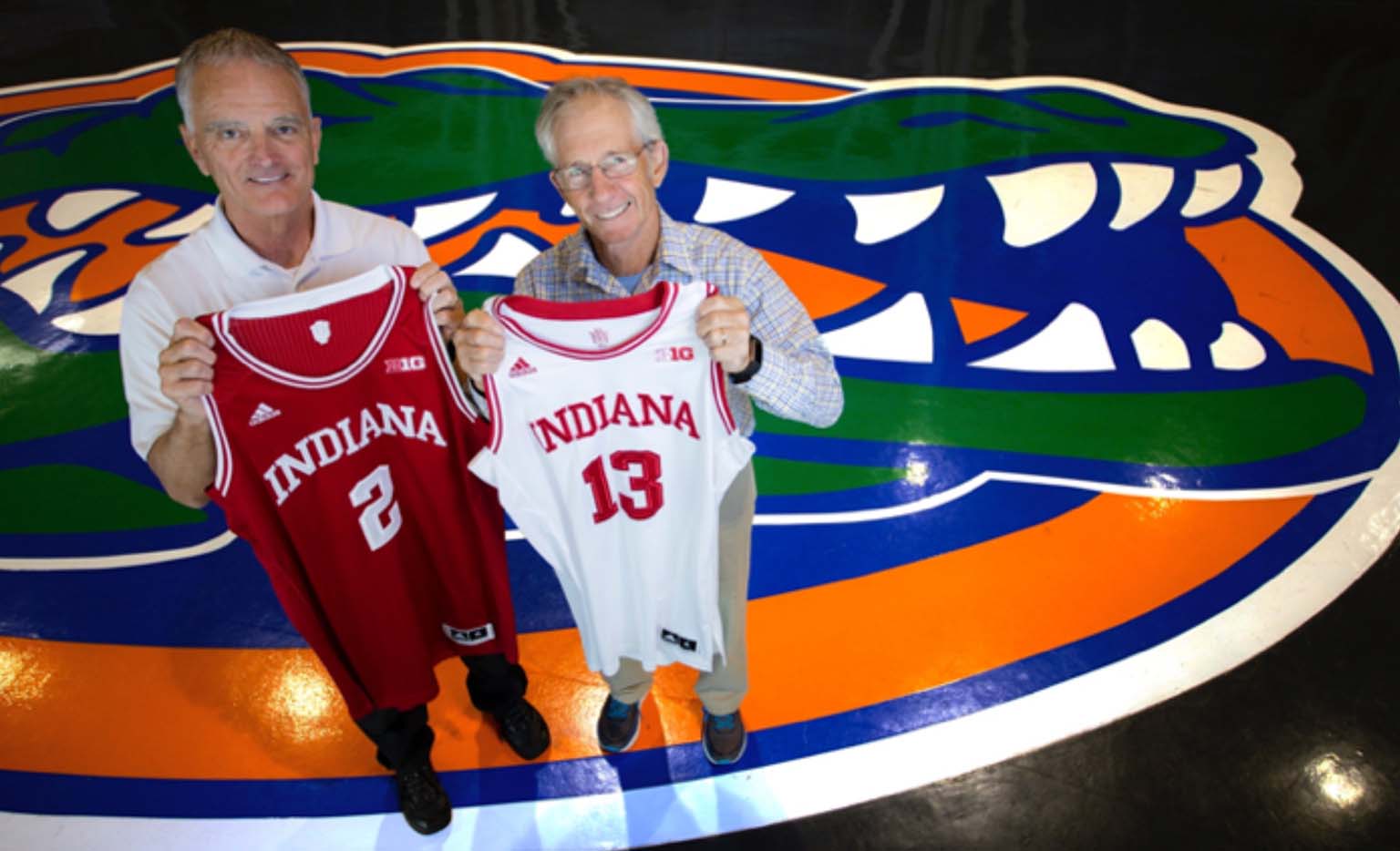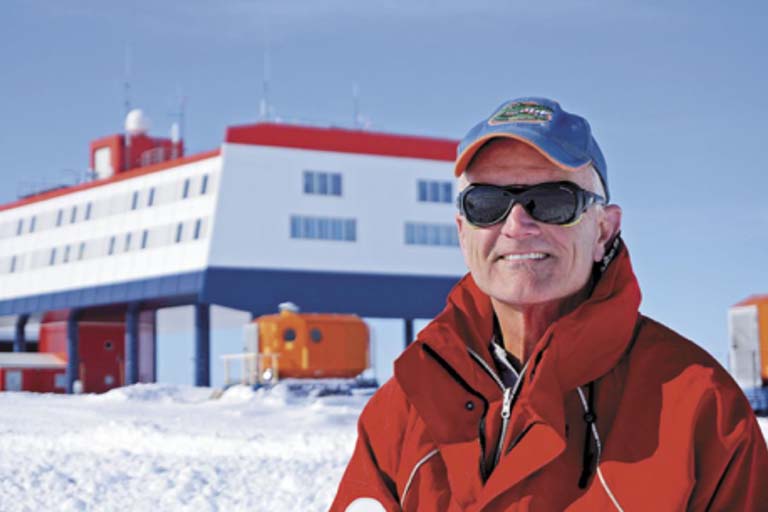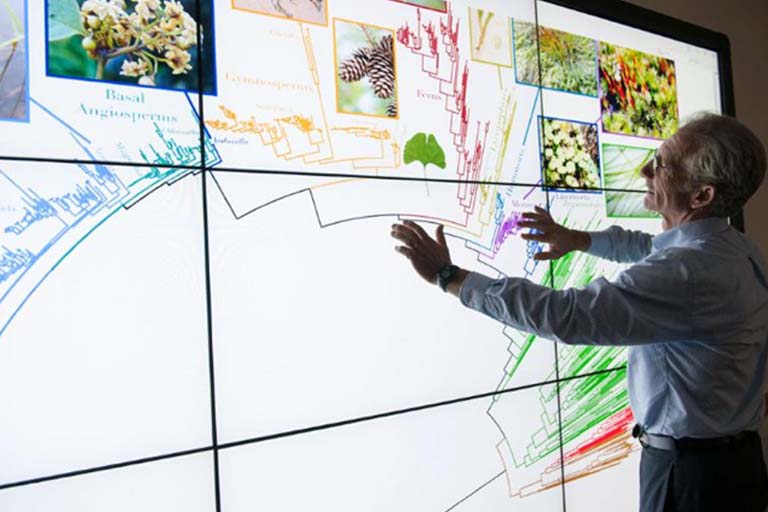Their careers reached a pinnacle in Florida, but their DNA is pure IU
By Jack M. Payne
By Jack M. Payne

Rob Ferl, MA’78, PhD’80, and Doug Soltis, MA’77, PhD’80, shared two things in common as graduate students at Indiana University in the late 1970s—they loved basketball and the science of genetics.
Both were huge Hoosier fans in the Bobby Knight era and spent many nights together at Assembly Hall, and even more afternoons playing pickup games.
Ferl and Soltis both spent plenty of hours in separate labs on campus—the former analyzing corn, the latter applying the same genetic analysis tools to wild plants. As a researcher, Ferl had the more plum assignment, and he’d let Soltis into his lab after hours, when the supervising faculty members had gone home, so Soltis could have a crack at working with the university’s best available tools.
“Indiana University was the center of the corn-genetics community in the 1970s,” Ferl says. “I look back at the faculty names and wonder, ‘How the heck did a kid like me get admitted there?’” Soltis is similarly amazed at his good fortune, saying, “I clearly slipped under the radar during the admission process.”
It was a coming-of-age period for two scientists in training, a time of long hours of lab work, celebrating a national basketball championship for their beloved Hoosiers, Friday night poker games, and a future that was as limitless as the Midwestern skies.
“Without that community at IU in the 1970s, I wouldn’t be at UF; I wouldn’t have our lab there.” —Doug Soltis
Graduating from IU with doctoral degrees, Soltis and Ferl chose different paths. Ferl left for the University of Florida, which was one of the few places outside of the Midwest that was on the cutting edge of corn-breeding research.
At the time, Ferl felt that Florida was an incredible place for him to land a job in 1980. He still feels that way, as a distinguished professor in the College of Agriculture and Life Sciences and as assistant vice president for strategic research projects within the university’s Office of Research. Ferl was also recently elected a member of the American Association for the Advancement of Science.
He doesn’t work on corn these days, but he has put his Indiana training to work on the study of DNA to make plants more resilient to stress. He has searched the globe for the ultimate stress test, and that took him and his plants to Antarctica—and beyond. These days, Ferl sends his plants into space on NASA launches. Although he doesn’t get to fly with them, he still enjoys laying the groundwork for growing food on Mars one day.


Soltis’s passion is plant evolution. He drew on genetics to grow his own “tree of life,” figuring out which plants are related to other plants, and how closely. It’s the kind of map scientists like Ferl rely upon to chart the course of their far-out applications.
Soltis spent his post-Indiana years at the University of North Carolina at Greensboro and at Washington State University. While he and Ferl would occasionally see each other’s names in scientific journals or get updates from mutual acquaintances, the friends lost touch.
Then, in the late ’90s, Ferl sent Soltis an email asking him to come to the University of Florida to give a genetics seminar. Soltis was honored by the invitation and excited by the opportunity to share his research with an elite group of scientists.
He responded that he was interested, and an email dialogue ensued to arrange the visit. One of those emails—sent in the dead of a Northwest winter—mentioned that the temperature in Gainesville was in the 70s and inscrutably ended with the words, “Want a job?”
Soltis laughed it off, but he did go to UF to give the seminar. When he landed in Gainesville, he learned that Ferl had arranged a full agenda of tours and visits with key faculty. It started to feel like a job interview.
Ultimately, the Florida Museum of Natural History, based on the University of Florida campus, started to cultivate Soltis as a recruiting target. The museum was looking for a geneticist.
Over dinner, Ferl asked Soltis if he’d be interested in coming to Florida again—permanently. Soltis went, along with his wife Pam, also a plant biologist. He is now a distinguished professor at the Florida Museum of Natural History and in the Department of Biology at UF. In 2016, the Soltises helped established the UF Biodiversity Institute. Their work has earned the couple membership in the National Academy of Sciences.
These days, Ferl and Soltis bump into each other in the gym occasionally, though aging knees and hips keep them off the basketball court.
They continue to be national leaders in their respective fields. Their success and enthusiasm for their work has made them two scientists the University of Florida lauds as exemplars of its research corps.
Soltis’s sporting allegiance has changed over the years and he now regularly attends University of Florida basketball games. But he recognizes that his zeal for the hoops and for the academic field in which he has carved a stellar career both received a huge boost from his years in Indiana.
“I don’t know where else I could have received the same foundation in genetics,” Soltis said. “Without that community at IU in the 1970s, I wouldn’t be at UF and I wouldn’t have our lab there.”
Jack M. Payne is the University of Florida’s senior vice president for agriculture and natural resources and leader of the Institute of Food and Agricultural Sciences. The profile was adapted for the IU Alumni Magazine, Fall 2019, and posted here with permission.